How to Fertilize Peppermint: Boost Your Harvest with Expert Advice
- May 8, 2024
- 0 comment
Learn how to fertilize peppermint for a boosted harvest! Expert tips for lush growth and flavorful leaves. to enhance your peppermint harvest? You’re in the right place! Our detailed guide reveals expert fertilization techniques that promise not only to increase your plant’s yield but also to improve the essential oil concentration and flavor of your peppermint.
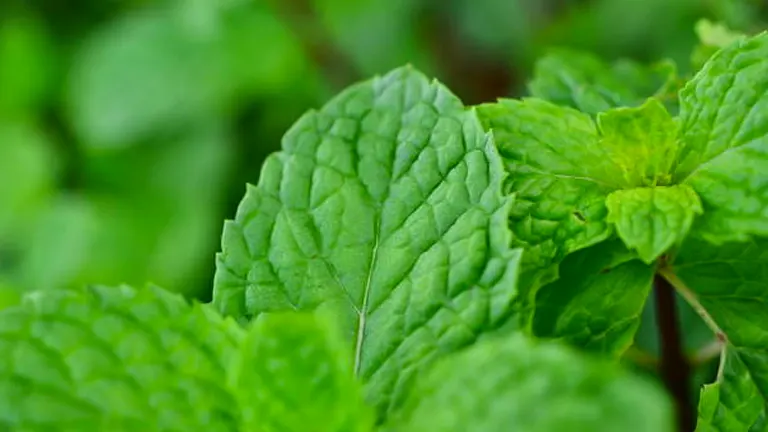
Whether you’re a seasoned gardener or a beginner, these tips will help you cultivate a healthier, more bountiful peppermint garden. Let’s dive into how you can achieve lush growth and a richer harvest.
Table of Contents
- Understanding Peppermint’s Nutritional and Spatial Needs
- Choosing the Right Fertilizer
- Preparing to Fertilize
- How to Apply Fertilizer
- Optimizing Post-Fertilization Care for Peppermint
- Advanced Tips and Common Mistakes
- Pruning Techniques for Peppermint
- Conclusion
- FAQs
Understanding Peppermint’s Nutritional and Spatial Needs
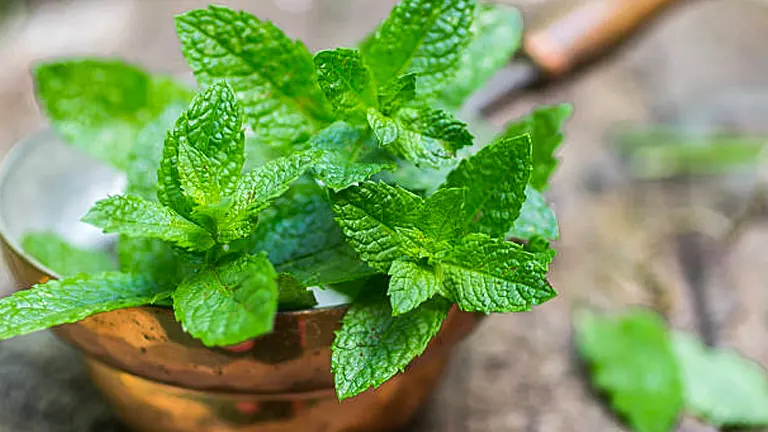
Peppermint (Mentha piperita) is a hardy perennial herb that thrives in temperate climates but requires specific environmental conditions and careful nutrient management to reach its full potential. It prefers locations that offer full to partial sunlight (ideally 6-8 hours per day) and well-drained, loamy soil rich in organic matter.
Nutritional Needs: Peppermint’s primary nutrients are nitrogen (N), phosphorus (P), and potassium (K), each playing a critical role in plant development:
- Nitrogen (N): Essential for the synthesis of chlorophyll and amino acids, nitrogen primarily supports leafy growth and vibrant green coloring. Peppermint requires high nitrogen levels during the initial stages of growth to establish a lush foliage canopy.
- Phosphorus (P): This nutrient is vital for energy transfer and photosynthesis at the cellular level. It promotes strong root development, which is crucial for the absorption of nutrients and water.
- Potassium (K): Potassium regulates the opening and closing of stomata, thus managing water use efficiency and resistance to drought conditions. It also enhances the plant’s ability to ward off diseases and tolerate stress.
Nutrient Deficiencies: To maintain health and vigor, it’s important to recognize signs of nutrient deficiencies in peppermint:
- Nitrogen Deficiency: Characterized by yellowing of older leaves (chlorosis), particularly at the bottom of the plant, which may advance to the entire plant if untreated.
- Phosphorus Deficiency: Manifests as stunted growth and dark, dull, or purplish leaves due to reduced chlorophyll production.
- Potassium Deficiency: Leads to marginal leaf scorch and curling, weak stems, and an overall reduction in vigor.
Nutrient Requirements for Peppermint (kg/ha)
| Nutrient | Requirement Range | Role |
|---|---|---|
| Nitrogen | 150-200 | Leaf growth, chlorophyll production |
| Phosphorus | 50-80 | Root development, flowering |
| Potassium | 100-150 | Disease resistance, essential oil quality |
| Magnesium | 30-50 | Chlorophyll synthesis |
| Sulfur | 20-30 | Enzyme function, protein synthesis |
| Boron | 1-3 | Cell wall formation, meristematic growth |
Proper Spacing and Density
- Medium-Density Planting: Spacing plants approximately 18 inches apart with 24 inches between rows allows for adequate airflow and sunlight penetration. This helps prevent disease and ensures that each plant receives ample soil nutrients.
- High-Density Planting: In smaller plots, peppermint can be planted more densely at 12 inches apart. However, meticulous water and nutrient management is crucial to reduce competition and promote healthy growth. Pruning is also essential in high-density settings to maintain airflow.
Choosing the Right Fertilizer
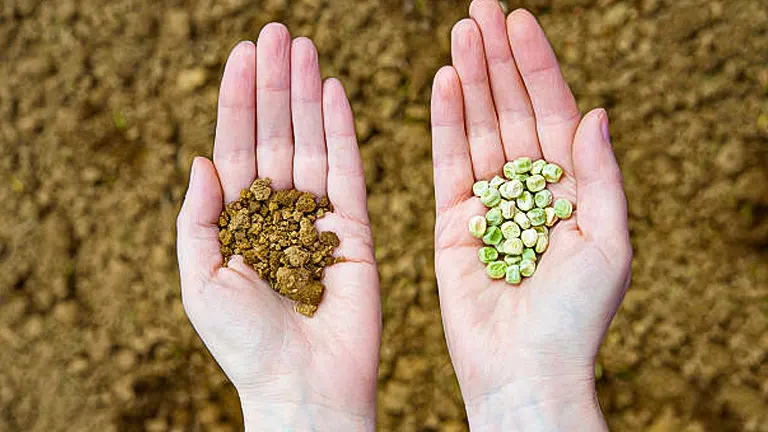
Selecting the appropriate fertilizer for peppermint requires balancing organic and synthetic options to best meet your soil’s needs and your gardening goals.
Organic Fertilizers
- Organic fertilizers, like composted manure, bone meal, and fish emulsion, release nutrients gradually and improve soil health over time. This slow nutrient release encourages strong root development and enhances soil microbial activity, leading to healthier, more disease-resistant peppermint plants.
- Nutrient Composition:
- Composted Manure: Typically contains around 1-2% nitrogen, 0.5-1% phosphorus, and 1.5-2% potassium.
- Bone Meal: High in phosphorus (10-20%) and calcium, with a small amount of nitrogen.
- Fish Emulsion: Contains 4-5% nitrogen, 1-2% phosphorus, and trace amounts of potassium.
These fertilizers are particularly valuable for long-term soil fertility due to their ability to improve soil structure, water retention, and microbial diversity.
Synthetic Fertilizers
- Synthetic fertilizers provide immediate and targeted nutrient availability, which is particularly useful during rapid growth phases when peppermint requires a quick nutrient boost. A balanced N-P-K ratio of 10-10-10 or 20-20-20 is often effective, delivering nitrogen (N) for foliage, phosphorus (P) for roots, and potassium (K) for disease resistance.
- Benefits: Synthetic fertilizers deliver immediate results by providing precise amounts of essential nutrients, making them suitable for boosting productivity in commercial peppermint farming. However, careful application following the manufacturer’s instructions is essential to avoid over-fertilization, which can lead to environmental concerns like nutrient runoff and soil degradation.
Special Considerations
- Slow-Release Fertilizers: Using slow-release fertilizers can provide a consistent supply of nutrients over time. This prevents leaching and ensures steady nutrition during peppermint’s growth cycle. Coated granular fertilizers, which release nutrients gradually due to their protective coating, are particularly effective.
- Soil Testing: Before choosing a fertilizer, it’s essential to conduct a soil test. This helps identify existing nutrient levels, deficiencies, and pH levels. For peppermint, the ideal soil pH is slightly acidic to neutral (6.0-7.0). Adjust the soil pH with lime (to raise pH) or sulfur (to lower pH) as needed.
Comparison of Fertilizer Types for Peppermint
| Type | Nutrient Release | Benefits | Considerations |
|---|---|---|---|
| Organic | Slow | Enhances soil structure, increases microbial activity, sustainable | Nutrient ratios vary, slower results |
| Synthetic | Immediate | Quick nutrient supply, precise N-P-K ratios, supports rapid growth | Risk of leaching, environmental impact |
| Slow-Release | Controlled | Reduces frequency of application, minimizes runoff, steady nutrition | Higher initial cost, careful application needed |
Best Practices for Application:
- Timing: Apply fertilizers early in the growing season and potentially again in mid-summer, aligning with peppermint’s active growth phases.
- Method: Incorporate granular fertilizers into the soil around the plant to avoid direct contact with foliage, and water thoroughly after application to help nutrients penetrate the root zone.
Preparing to Fertilize
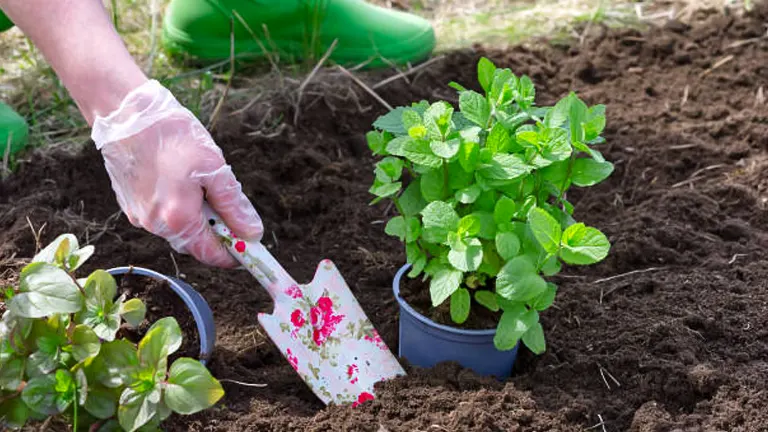
Effective soil preparation is crucial for successful peppermint cultivation, as it directly impacts the plant’s health, root development, and the essential oil quality. Understanding the current state of your soil through a thorough assessment sets the stage for optimal growth.
Conducting a Soil Test: Begin by obtaining a detailed analysis of your soil from a local extension service or reputable garden center. This test should measure the pH level, which ideally should be between 6.0 and 7.0 for peppermint. It should also assess the nutrient profile, identifying the concentrations of nitrogen, phosphorus, potassium, and important micronutrients like magnesium and calcium. The organic matter content should also be evaluated to determine the soil’s fertility and structural condition.
Adjusting Soil pH: If the soil’s pH is outside the ideal range, adjustments are necessary to improve nutrient availability:
- To increase the soil’s pH, apply garden lime which can help neutralize overly acidic soil.
- To decrease the soil’s pH, incorporate sulfur or organic materials like pine needles, which can naturally acidify the soil.
Enhancing Soil Structure and Fertility: Properly preparing the soil involves several steps to enhance its condition:
- Aerating the soil through tilling improves oxygen availability to plant roots and facilitates better water drainage, preventing waterlogging conditions detrimental to peppermint.
- Removing weeds is essential as they compete with peppermint for nutrients and can harbor pests and diseases.
- Organic materials such as compost, aged manure, or leaf mold should be mixed into the soil to a depth of 2 to 4 inches. Doing this several weeks before planting and fertilizing allows time for these materials to decompose, enriching the soil with nutrients and enhancing its moisture retention capabilities.
Final Steps Before Fertilization
- Irrigate the soil one day before applying fertilizer to ensure it is evenly moist. This preparation helps in the uniform distribution of nutrients and protects the plant roots from potential burn caused by concentrated fertilizer.
- Planning the plot layout with sufficient spacing is crucial. Adequate space between the rows and individual plants ensures better airflow and light penetration, reducing the risk of moisture-related diseases and promoting healthier growth.
By thoroughly preparing your soil for fertilization, you not only optimize the growing conditions for peppermint but also enhance the effectiveness of the fertilizers applied, ensuring that your plants are vigorous and productive. This comprehensive approach to soil preparation paves the way for a lush, flavorful peppermint harvest.
How to Apply Fertilizer
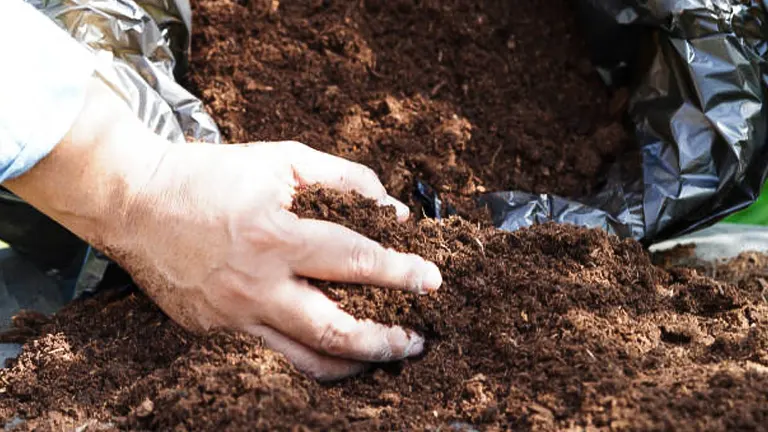
Fertilizing peppermint effectively requires careful consideration of method and timing. Here are step-by-step instructions for applying fertilizer to ensure optimal plant health and productivity:
Step 1: Soil Preparation
- Before fertilizing, ensure the soil around your peppermint is loose and free of weeds. This preparation helps the soil absorb the nutrients more effectively.
- Moisten the soil if it is dry, as applying fertilizer to dry soil can harm the plant. The soil should be damp to the touch, which aids in the even distribution and absorption of the fertilizer.
Step 2: Selecting the Fertilizer
- Choose a fertilizer with a balanced N-P-K ratio (10-10-10) suitable for herbaceous plants like peppermint. This balance supports leaf, root, and stem growth without overpowering the plant.
- For organic options, well-composted manure or a seaweed-based fertilizer can provide a slow-releasing nutrient source that also enriches the soil.
Step 3: Measuring the Fertilizer
- Refer to the fertilizer package for the recommended amount per square foot. For peppermint, typically about 1 cup of granular fertilizer per 20 square feet is advised.
- If using liquid fertilizer, mix it with water as directed on the package. This usually involves diluting a specified amount of concentrate into a gallon of water.
Step 4: Applying the Fertilizer
- For granular fertilizer, evenly sprinkle the granules around the base of the peppermint plants, extending to the outer edges of the plant’s spread. Avoid piling fertilizer against the plant stems to prevent burn.
- For liquid fertilizer, gently pour the mixed solution over the soil around the plants. Ensure that the liquid does not splash on the leaves, as this could cause burn during sunny days.
Step 5: Watering In
- After applying granular fertilizer, water the area lightly to help the granules dissolve and seep into the soil. This “watering in” is crucial as it initiates the release of nutrients from the granular form and prevents the fertilizer from being blown away or washed off superficially.
- If you’ve used liquid fertilizer, additional watering isn’t necessary, but make sure the soil was adequately moist before application.
Step 6: Monitoring and Adjusting
- Observe the peppermint over the next few days to ensure it responds well to the fertilization. Signs of over-fertilization include yellowing or burnt leaf edges.
- Adjust your fertilization practices based on the plant’s response. Less frequent applications or reduced amounts may be necessary if signs of stress appear.
Optimizing Post-Fertilization Care for Peppermint
After the careful application of fertilizer, the ongoing care of peppermint plants becomes paramount to harness the full benefits of the nutrients provided. Effective post-fertilization practices are crucial for ensuring that peppermint not only survives but thrives in your garden.
- Watering Properly: Immediately following fertilizer application, it is vital to water the plants thoroughly to help integrate the nutrients into the soil. This initial watering should be deep enough to moisten the soil to the root level without causing runoff, which could wash away valuable nutrients. As the season progresses, maintaining a consistent moisture level becomes critical, particularly during the warmer months. Watering should be done early in the morning to minimize evaporation and provide moisture throughout the day. This routine helps in establishing a robust root system, essential for the uptake of nutrients and overall plant stability.
- Monitoring for Health and Growth: Regular observation of the peppermint plants after fertilization is essential to catch any signs of distress, such as leaf scorching or halted growth, which could indicate nutrient overload. If such symptoms appear, it may be necessary to adjust future fertilizer applications to prevent damage to the plants. Regular monitoring also includes checking for pests and diseases, which can quickly escalate in nutrient-rich conditions if not addressed promptly.
- Utilizing Mulch Effectively: Applying a layer of organic mulch around the peppermint can do wonders for moisture conservation and temperature control at the root zone. Organic mulches like straw or shredded bark decompose over time, adding to the soil’s nutrient profile and improving its structure. This not only suppresses weeds, which compete with peppermint for resources, but also helps to keep the soil temperatures steady, shielding the plants from extreme heat.
- Encouraging Deeper Roots: To promote a deeper, more resilient root system, periodic deep watering is recommended. This method encourages roots to extend deeper into the soil, enhancing the plant’s access to nutrients and its ability to withstand drought conditions. Conversely, frequent shallow waterings should be avoided as they encourage roots to stay near the soil surface, making the plants less robust.
- Maintaining Soil Fertility: Ensuring ongoing soil fertility is crucial, especially in growing areas with high nutrient uptake or where soil conditions are less than ideal. This may involve adding a top layer of compost or additional mulch mid-season, which can help replenish the soil’s nutrients and support continued plant growth and essential oil production in peppermint leaves.
Advanced Tips and Common Mistakes
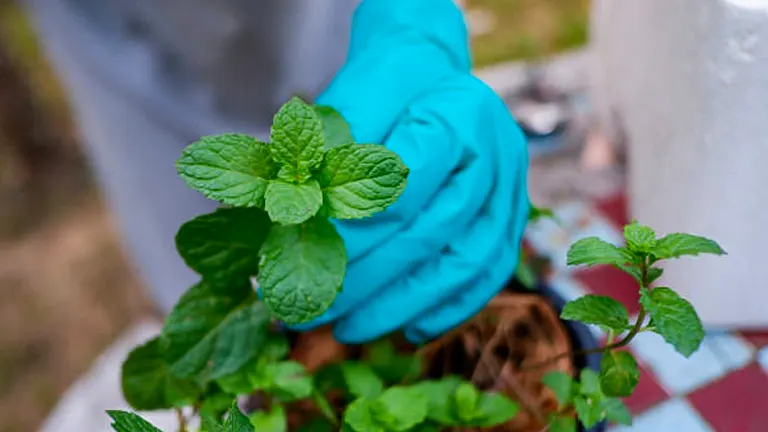
To maximize the health and productivity of your peppermint plants, it’s crucial to not only follow basic care guidelines but also to incorporate some advanced gardening techniques. Equally important is avoiding common mistakes that could hinder your success.
Advanced Gardening Tips:
Proper fertilization and care extend beyond simple applications. Consider these more nuanced approaches to boost your peppermint’s growth:
- Fertilization Frequency: Monitor your plants closely and adjust your fertilization schedule based on their response. In high-density planting areas, peppermint may require more frequent fertilization due to greater nutrient demands.
- Foliar Feeding: This method can be particularly effective if you notice signs of nutrient deficiency. Applying a diluted solution of fertilizer directly to the leaves can quickly rectify minor deficiencies. This should be done either early in the morning or later in the evening to minimize the risk of sunburn on the leaves.
- Companion Planting: Integrating plants like basil or oregano can deter pests naturally and improve the overall soil ecology, which benefits your peppermint plants by reducing competition and enhancing nutrient uptake.
- Crop Rotation: Rotating peppermint with other crops can prevent soil depletion and reduce the buildup of pests and diseases that might otherwise become entrenched in the soil.
Common Mistakes to Avoid:
Awareness and prevention of these common errors can significantly enhance your gardening success:
- Over-fertilization: More is not always better. Excessive fertilizer can lead to lush growth but weak plants, with a lower concentration of essential oils, which are crucial for the quality of peppermint leaves.
- Improper Watering: Peppermint requires consistent moisture, but overwatering can lead to root rot and under-watering can stress the plants, making them more susceptible to disease and pest issues.
- Crowding Plants: Adequate spacing is essential for air circulation, which helps prevent fungal diseases. Ensure your peppermint plants are not too crowded, which also facilitates easier maintenance and harvesting.
Pruning Techniques for Peppermint

Pruning is a crucial aspect of managing peppermint plants, influencing not only the health of the plant but also the yield and quality of its harvest. By employing specific pruning strategies tailored to the growth cycle and physiological needs of peppermint, gardeners can significantly enhance both the quantity and quality of the foliage, which is essential for both culinary and essential oil uses.
Principles of Effective Pruning:
Pruning should aim to promote healthy growth, increase light and air penetration to the lower parts of the plants, and maintain optimal plant structure for harvesting. Here’s how to apply these principles effectively:
- Regular Harvesting:
- Goal: Encourage bushier, more robust growth.
- Method: Regularly trim the top third of the peppermint plant. This action stimulates the lateral branches to grow, resulting in a denser and more productive plant.
- Frequency: Perform this light pruning every 3-4 weeks during the active growing season to maintain vigor and manage plant size.
- Mid-Season Pruning:
- Goal: Rejuvenate older plants and stimulate a new flush of growth.
- Method: In mid-summer, conduct a more extensive cutback, trimming the plants down to about 6 inches above the soil. This severe pruning encourages the plant to regenerate, promoting new growth and potentially improving essential oil concentration in the leaves that develop post-pruning.
- Timing: This should be timed just after the first flowering peak to maximize regrowth before the end of the growing season.
- Disease and Pest Management:
- Goal: Reduce the incidence of diseases and pests.
- Method: Regularly inspect and promptly remove any leaves that show signs of disease or pest infestation. This helps prevent the spread of issues and maintains overall plant health.
- Tip: Dispose of diseased material far from your garden to prevent re-infection or contamination of the soil.
Pruning Schedule and Techniques for Peppermint
| Technique | Timing | Description | Benefits |
|---|---|---|---|
| Regular Harvesting | Every 3-4 weeks | Trimming the top third of the plant | Promotes bushier growth, increases yield |
| Mid-Season Pruning | Mid-Summer | Extensive cutback to 6 inches above ground | Stimulates new growth, enhances oil quality |
| Disease Management | As needed | Removal of diseased or pest-infested leaves | Prevents spread of disease, maintains health |
Scientific Considerations:
Research indicates that pruning peppermint not only affects physical growth but can also influence the concentration of essential oils in the leaves. The timing of pruning relative to growth phases is crucial, as the plant’s physiological responses can vary. Pruning during peak vegetative growth often results in a higher concentration of essential oils in subsequent harvests, as the plant mobilizes its resources to regenerate.
Related Post
- How to Fertilize Bougainvillea: A Complete Guide for Stunning Blooms
- How to Fertilize Apple Trees: Essential Tips for a Bountiful Harvest
- How to Fertilize Lemon Trees: Secrets for Thriving Citrus
- How to Fertilize Avocado Tree: A Step-by-Step Guide for Lush Growth
Conclusion
Achieving a bountiful peppermint harvest is both rewarding and feasible with the right care and techniques. By diligently applying the best practices outlined in this guide—from proper fertilization and effective pruning to avoiding common pitfalls—you can significantly enhance both the quantity and quality of your peppermint. Remember, the key to successful peppermint cultivation lies in understanding the plant’s specific needs and responding to them attentively.
FAQs
- What is the impact of local climate on fertilizing peppermint?
Local climate can significantly affect the fertilization schedule and type of fertilizer needed. In cooler climates, peppermint might require less frequent fertilization, as growth is slower. Conversely, in warmer regions, increased evaporation and plant growth might necessitate more frequent applications. - How does the choice of fertilizer affect the flavor profile of peppermint leaves?
The type and amount of fertilizer used can influence the concentration of essential oils in peppermint leaves, directly affecting their flavor. Organic fertilizers tend to enhance flavor quality by slowly releasing nutrients and improving soil health. - Can I use a water-soluble fertilizer for my indoor peppermint plants, and how does it differ from outdoor application?
Water-soluble fertilizers are ideal for indoor peppermint plants because they allow for controlled and immediate nutrient release, which is beneficial in container gardening. The application should be more frequent but in smaller amounts compared to outdoor plants due to the limited soil volume. - What specific micronutrients are crucial for peppermint, and should they be added separately?
While N-P-K is essential, micronutrients like magnesium and iron are also crucial for peppermint. These help in chlorophyll production and overall plant health. Depending on your soil test results, you might need to add these micronutrients separately using specific supplements. - How does the age of the peppermint plant influence its fertilization needs?
Young peppermint plants require more phosphorus to encourage root development, while established plants benefit from a nitrogen-rich fertilizer to boost leaf production. Adjusting your fertilizer formula as your plants mature can lead to better growth and yields. - Is there a difference in fertilization techniques between peppermint grown in the ground and in containers?
Yes, peppermint grown in containers requires more frequent fertilization because nutrients leach out with each watering. However, the concentration of fertilizer should be lower to avoid salt buildup, which can damage the roots in a confined soil volume. - How should I adjust fertilization if my peppermint is used primarily for essential oils?
If you are growing peppermint mainly for essential oil production, focus on optimizing potassium and magnesium levels, which are known to enhance oil content and quality. Consider using a fertilizer that is slightly higher in these elements. - What are the environmental considerations when choosing a fertilizer for peppermint to minimize ecological impact?
Opting for organic fertilizers not only benefits plant health but also reduces the environmental footprint by avoiding synthetic inputs. These natural options improve soil biology, which is crucial for sustainable gardening practices.
In closing, fertilizing peppermint effectively can significantly enhance both the health of your plants and the quality of your harvest. By applying the expert advice shared here, you’re well on your way to enjoying a lush, flavorful peppermint crop that thrives season after season. Happy gardening!

Benjamin Brooks
Forestry AuthorGreetings! I'm Benjamin Brooks, and my journey over the past 15 years has revolved around the fascinating realms of content creation, expertise in snow clearing, and the intricate world of lumberjacking and landscaping. What began as a simple curiosity about the natural world and heavy machinery has evolved into a passionate profession where my love for crafting words intertwines seamlessly with my lumberjacking and garden skills.




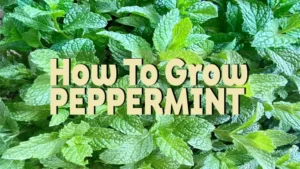
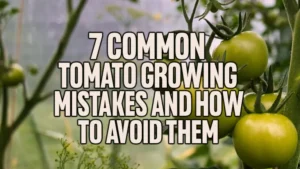





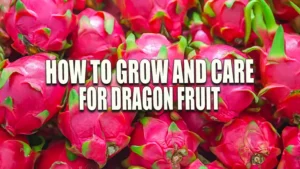

Leave your comment